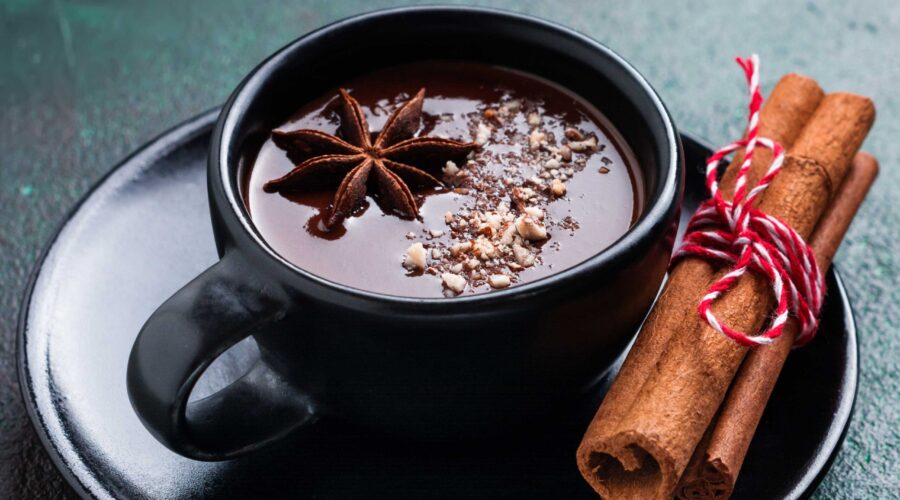Celebrating National Hot Chocolate Day with Spices, Memories, and Warmth: The Story Behind Haitian Hot Chocolate
Each January 31st we celebrate National Hot Chocolate Day in the US, one day to commemorate, enjoy and learn a bit more about one of the most beloved drinks around the world: hot chocolate. Therefore, this celebration is a good opportunity to expand your view and highlight the significance, history and relevance that cocoa and particularly hot chocolate have had in different cultures across centuries.
With this purpose, in this blog post we will explore the history of cocoa production in Haiti, and how Haitian hot chocolate, also known as chocolate chaud, chokola ayisyen or chocolate peyi, is a delicious and nutritious drink that reflects the culture and identity of the Haitian people.

A Brief History of Cocoa in Haití
Cocoa also called cacao in some regions, is the dried and fully fermented seed of Theobroma cacao, a native tree from the Amazon rainforest which was first domesticated by human groups from South America around 5300 years ago, and was after introduced, spread and used for different human groups on nearly the entire American continent.
Particularly, in the case of the lands we now call Haiti, cocoa has been produced and used as food for centuries and as a result Haiti is one of the oldest cocoa-growing regions in the world.
The origin of Haitian cocoa dates back to the Taino people, who were the first to find and plant cocoa in the area. These ancient civilizations valued cocoa not only as food but also as a currency and sacred element in their ceremonies.
During colonial times one of the earliest records related to Haiti and cocoa was its introduction for commercial purposes in the early 16th century by the Spanish conquistador Hernán Cortés, who established a plantation in this land as in the Dominican Republic.
Later, in the 17th and 18th centuries, there is evidence that the French brought cocoa to Haiti, but to a lesser extent than in their other colonies under their control, such as Martinique, St. Lucia and the Dominican Republic. However, after Haitian independence, cocoa became an important source of foreign exchange, and along with coffee, accounted for most of Haiti’s exports in the 19th and 20th centuries.
Today, we can find that three main variations grow in the country: Trinitario, Criollo and Forastero, which have a strong fruity flavor as a peculiar identity. This cocoa is an important ingredient in making the delicious Haitian hot chocolate also known as chocolat chaud or chocolat peyi.

A cocoa drink with a special Haitian flavor
When we talk about Haitian chocolate we are referring to a hot chocolate completely different from any other chocolate drink you’ll ever taste. Haitian hot chocolate is made with the authentic Haitian chocolate ball, which is bittersweet as it has less sugar, carnation milk and some basic pantry ingredients, such as lemon peel, butter, some star anise, cloves, cinnamon sticks, vanilla extract or even rum.
The result is a complex, aromatic drink that warms you from the inside out. This drink is enjoyed during the holidays, occasionally on weekdays and often during breakfast.

How to make chocolat chaud
- Prepare the water: In a medium saucepan, bring the water, star anise and cinnamon sticks to a boil. Lower the heat and let it simmer for 5 minutes so that the spices release their aroma.
- Melt the chocolate: Add the Haitian chocolate balls and let them simmer for another 5-7 minutes, breaking them up with a spoon as they melt. If using cocoa powder, add it now and whisk to dissolve.
- Add the milk and sugar: Stir in the milk and sugar, adjusting the amount according to your preference for sweetness and creaminess. Haitian hot chocolate is usually quite sweet, but you can adapt it to your taste.
- Cook and strain: Bring the mixture back to a boil and cook for another 5 minutes, so that the flavors integrate. Strain the hot chocolate through a fine mesh strainer to remove any spices or chocolate chunks.
- Spicy touch: For a more intense touch, add a pinch of nutmeg or a dash of Haitian clairin (rum). Serve in style: Pour the hot chocolate into mugs and garnish with a sprinkle of cinnamon powder, a dollop of whipped cream, or a zest of lime for a citrusy touch.
Haitian Hot Chocolate is more than just a warm beverage; it’s a symphony of flavors that resonates with Haitian culture since it represents a rich tradition and connection.
Traditionally enjoyed for breakfast or as a mid-afternoon pick-me-up, Haitian hot chocolate is a chance to slow down and savor rich flavors. Additionally, it holds a special place at celebrations and during times of reflection, connecting people to their roots and memories.
Moreover, its complex flavor profile represents the complexity and multicultural roots of Haitian culture and also makes Haitian hot chocolate stand out from other hot chocolates due to its unique blend of spices. So, we invite you to discover all these new flavors and give a try to this great traditional Haitian drink, once you taste it you will never forget it.

